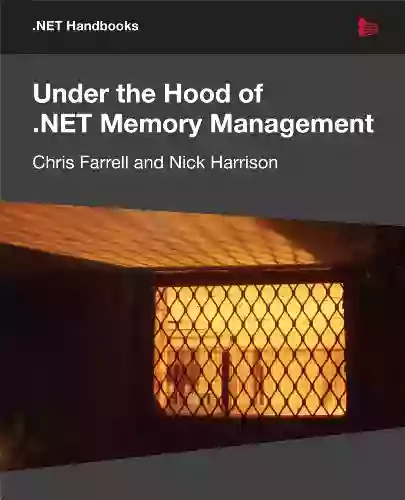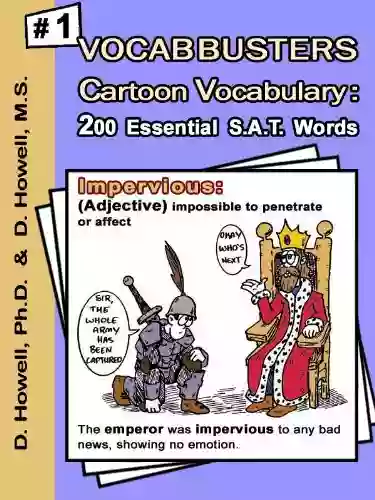Do you want to contribute by writing guest posts on this blog?
Please contact us and send us a resume of previous articles that you have written.
Under The Hood Of Net Memory Management

Have you ever wondered how the .NET framework manages memory? Memory management is a critical aspect of any programming language, and understanding how it works is essential for writing efficient and reliable code. In this article, we will take a deep dive into the inner workings of .NET memory management, exploring the concepts, algorithms, and techniques used to ensure optimal memory usage.
to Memory Management
Before we begin exploring the intricate details of .NET memory management, let's first establish a basic understanding of what memory management entails. At a high level, memory management refers to the process of allocating and deallocating memory resources within a computer program. It involves managing memory allocation for data structures, organizing memory spaces, and handling deallocation to prevent memory leaks.
The .NET framework provides a sophisticated memory management system known as the Common Language Runtime (CLR). The CLR is responsible for automatic memory management, allowing developers to focus on writing code rather than explicitly managing memory. Let's take a closer look at how the CLR handles memory management in .NET applications.
4.7 out of 5
| Language | : | English |
| File size | : | 4048 KB |
| Text-to-Speech | : | Enabled |
| Screen Reader | : | Supported |
| Enhanced typesetting | : | Enabled |
| Print length | : | 238 pages |
| Lending | : | Enabled |
Garbage Collection
The cornerstone of memory management in .NET is garbage collection. Garbage collection is an automatic process in which the CLR identifies and frees up memory that is no longer in use. It removes objects from memory that are no longer referenced by any active part of the program, ensuring efficient memory utilization. The garbage collector works in the background, periodically scanning the managed heap and reclaiming memory occupied by unused objects.
The managed heap is the primary memory area where .NET objects reside. The garbage collector divides the managed heap into three generations based on an object's lifetime. This allows the garbage collector to optimize memory management based on the object's usage pattern. The three generations are:
- Generation 0: Newly-created objects reside in this generation. Garbage collection in this generation is relatively faster.
- Generation 1: Objects that have survived a garbage collection in Generation 0 move to Generation 1.
- Generation 2: Objects that have survived a garbage collection in Generation 1 move to Generation 2. Garbage collection in this generation is relatively slower.
Memory Allocation and Object Lifetime
When objects are created in .NET, memory is allocated for them on the managed heap. This allocation is handled by the new operator or through other object creation mechanisms. Objects have different lifetimes depending on their usage within an application.
A short-lived object, also known as a "transient" object, typically resides in Generation 0. These objects have a short lifetime and are collected during a garbage collection of Generation 0. If they survive this collection, they move to Generation 1. However, if they are not referenced again, they will be eventually collected in a subsequent garbage collection cycle.
Longer-lived objects, also known as "pinned" objects, are objects that are explicitly prevented from being moved by the garbage collector. This often occurs when an object interacts with unmanaged code or when an application requires precise control over memory location. Pinned objects reside in Generation 2 and are not subject to relocation during garbage collection cycles.
Mark and Sweep Algorithm
The garbage collector uses a mark and sweep algorithm to identify and collect unused objects. The algorithm involves two major steps:
- Mark: During the mark phase, the garbage collector traverses the object graph starting from a set of root objects. The root objects include all static objects, active stack frames, and CPU registers. It marks the objects that are reachable from the root objects as "in use."
- Sweep: In the sweep phase, the garbage collector examines all objects on the managed heap. It frees up memory for objects that were not marked during the mark phase, as they are considered unused.
This mark and sweep process repeats periodically, ensuring unused objects are efficiently removed from memory. However, the garbage collector must perform these operations with minimal impact on application performance. Therefore, there are various optimization techniques employed to balance memory reclamation efficiency and overall system responsiveness.
Finalization and Object Cleanup
Before an object is removed from memory, it undergoes a finalization process. Finalization allows objects to clean up any unmanaged resources or perform other tasks before they are completely destroyed. However, relying solely on finalization can be problematic, as it adds significant overhead to the garbage collection process. Therefore, it is common practice to implement the IDisposable interface for explicit resource cleanup and to avoid unnecessary finalization delays.
Best Practices for Memory Management
Writing code that utilizes memory efficiently is crucial for the performance and stability of .NET applications. Here are some best practices to ensure effective memory management:
- Avoid creating unnecessary objects: Minimize object creation to reduce memory usage and improve performance.
- Release object references when no longer needed: Make sure to set object references to
nullwhen they are no longer required to allow the garbage collector to free up memory. - Dispose of objects implementing
IDisposable: Objects that manage unmanaged resources should be explicitly disposed using theDisposemethod or theusingstatement. - Optimize large object allocations: Large objects (>85,000 bytes) are allocated on the Large Object Heap (LOH),which is garbage collected less frequently. Avoid unnecessary allocations of large objects to prevent memory fragmentation.
- Profile and analyze memory usage: Use memory profiling tools to identify memory leaks, excessive object creation, or inefficient memory usage patterns.
Memory management is a critical aspect of software development, and understanding how it works in the .NET framework is vital for writing high-performing, reliable code. By delving into the inner workings of .NET memory management, we've explored the garbage collection process, memory allocation, and object lifetimes. We've also discussed the mark and sweep algorithm, finalization, and best practices to optimize memory usage.
With this knowledge, you can now leverage the powerful memory management capabilities of the .NET framework to build efficient and robust applications. Remember, effective memory management is the backbone of successful software development.
4.7 out of 5
| Language | : | English |
| File size | : | 4048 KB |
| Text-to-Speech | : | Enabled |
| Screen Reader | : | Supported |
| Enhanced typesetting | : | Enabled |
| Print length | : | 238 pages |
| Lending | : | Enabled |
This book starts with an to the core concepts of .NET memory management and garbage collection, and then quickly layers on additional details and intricacies. Once you're up to speed, you can dive into the guided troubleshooting tour, and tips for engineering your application to maximise performance. And to finish off, take a look at some more sophisticated considerations, and even a peek inside the Windows memory model.

 Richard Simmons
Richard SimmonsThe Secrets of Chaplaincy: Unveiling the Pastoral...
Chaplaincy is a field that encompasses deep...

 Manuel Butler
Manuel ButlerAnimales Wordbooks: Libros de Palabras para los Amantes...
Si eres un amante de los animales como yo,...

 Rod Ward
Rod WardLet's Learn Russian: Unlocking the Mysteries of the...
Are you ready to embark...

 Rod Ward
Rod WardThe Incredible Adventures of Tap It Tad: Collins Big Cat...
Welcome to the enchanting world of...

 Eugene Powell
Eugene PowellSchoolla Escuela Wordbookslibros De Palabras - Unlocking...
Growing up, one of the most significant...

 José Martí
José Martí15 Exciting Fun Facts About Canada for Curious Kids
Canada, the second-largest...

 Ken Simmons
Ken SimmonsWhat Did He Say? Unraveling the Mystery Behind His Words
Have you ever found yourself struggling to...

 Carlos Fuentes
Carlos FuentesA Delicious Journey through Foodla Comida Wordbookslibros...
Welcome to the world of Foodla Comida...

 Matt Reed
Matt ReedThe Many Colors of Harpreet Singh: Embracing...
In a world that often...

 Chandler Ward
Chandler WardWelcome To Spain Welcome To The World 1259
Welcome to Spain, a country that captivates...

 Garrett Powell
Garrett PowellAmazing Recipes for Appetizers, Canapes, and Toast: The...
When it comes to entertaining guests or...

 Emilio Cox
Emilio CoxDays And Times Wordbooks: The Ultimate Guide to Mastering...
In the realm of language learning,...
Light bulbAdvertise smarter! Our strategic ad space ensures maximum exposure. Reserve your spot today!

 Jedidiah HayesThe Fascinating World of Physical and Chemical Dating Methods: Unraveling the...
Jedidiah HayesThe Fascinating World of Physical and Chemical Dating Methods: Unraveling the... Langston HughesFollow ·13.2k
Langston HughesFollow ·13.2k Colin FosterFollow ·8.2k
Colin FosterFollow ·8.2k Abe MitchellFollow ·10.8k
Abe MitchellFollow ·10.8k Jeremy CookFollow ·9.9k
Jeremy CookFollow ·9.9k Colt SimmonsFollow ·5.8k
Colt SimmonsFollow ·5.8k Ethan MitchellFollow ·17.7k
Ethan MitchellFollow ·17.7k Brennan BlairFollow ·2.5k
Brennan BlairFollow ·2.5k Levi PowellFollow ·5k
Levi PowellFollow ·5k




















